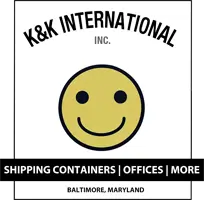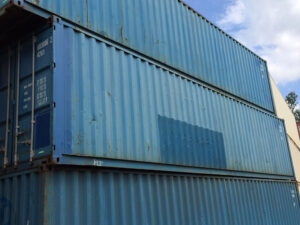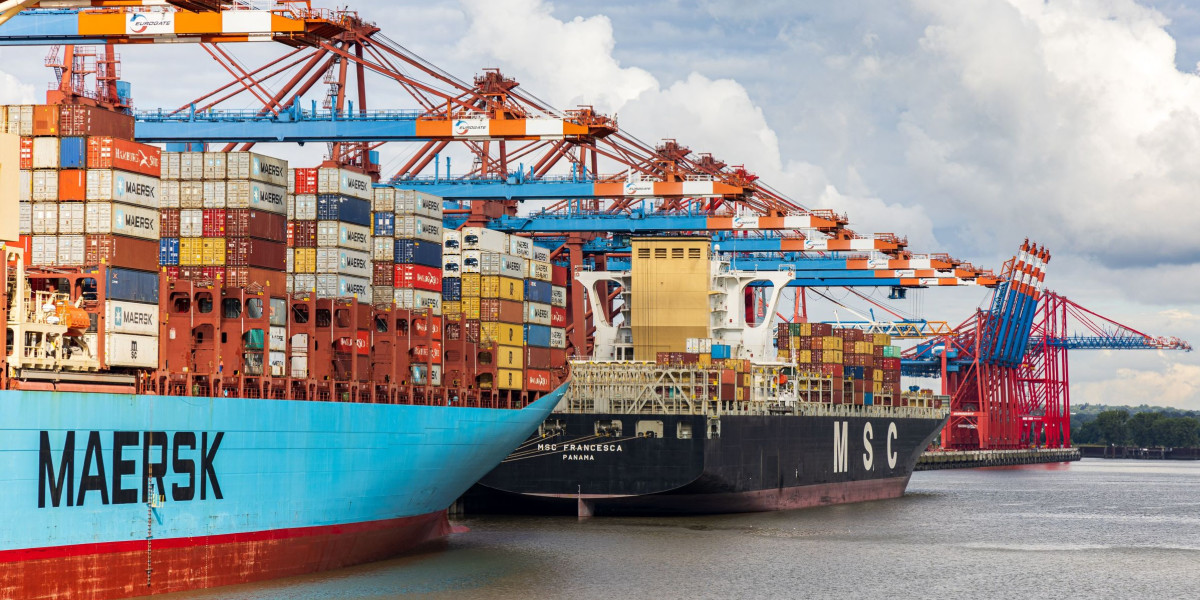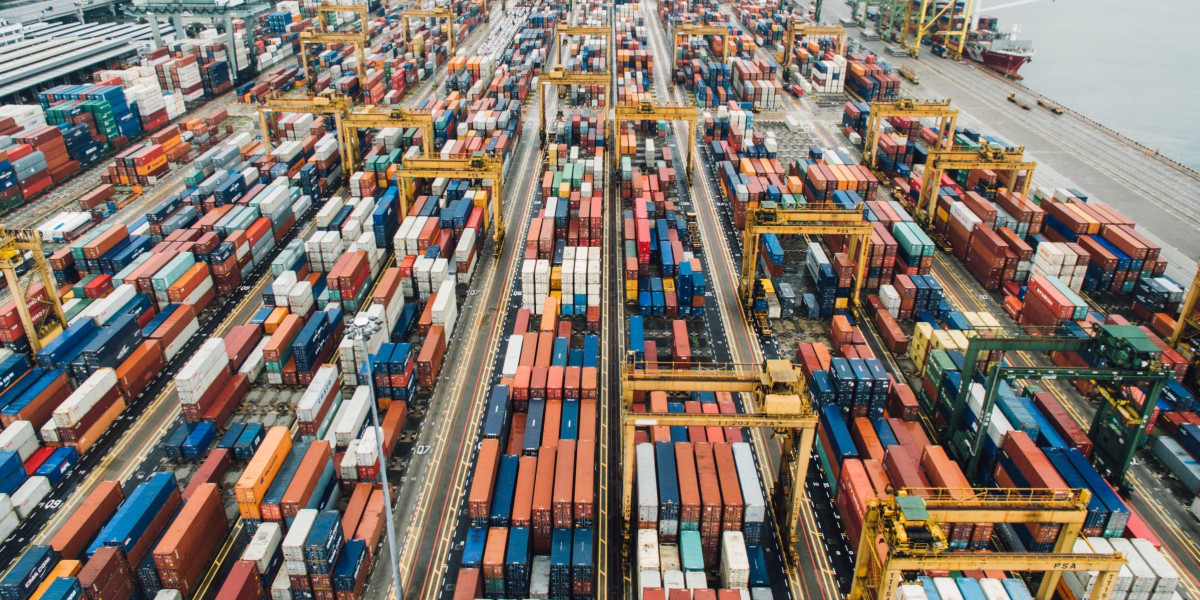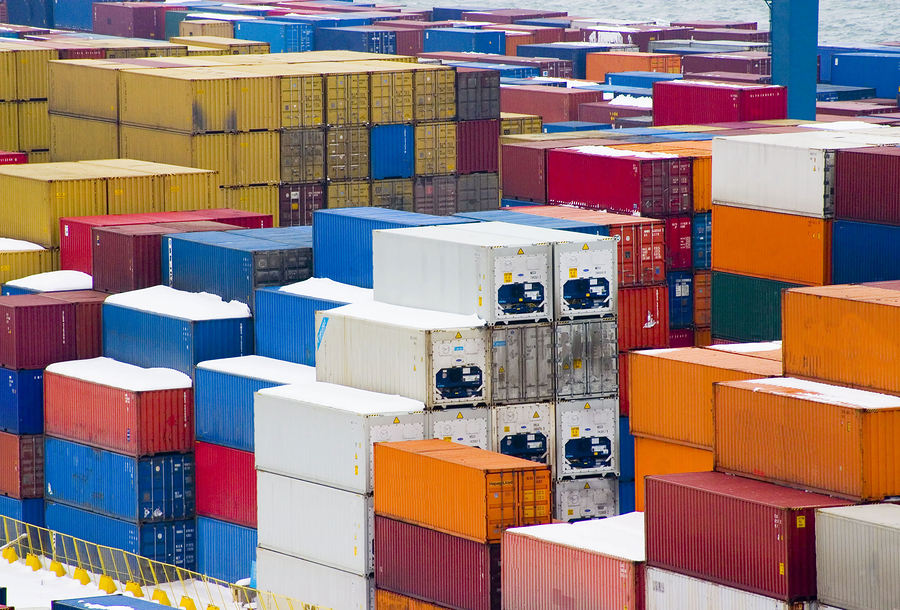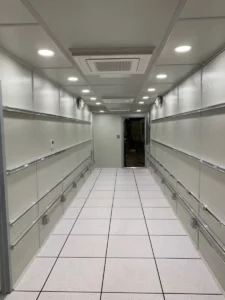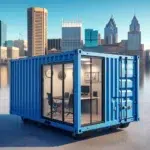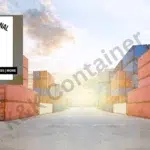Looking to buy a shipping container? You have numerous options, and one of the first things you should do is determine which one fits your needs.
For example, used shipping containers are available in a range of sizes; typical container dimensions are between 10 to 40 feet long, and 8.5 to 9.5 feet tall. Yet, choosing the right shipping container sizes is just one important consideration you will need to make.
You’ll also want to choose a container that will work for your intended use, one that’s in the right condition, and of course, a container that matches your allotted budget.
Not exactly sure what you’re looking for? This quick shipping container buyer’s guide will help you shop for containers like a pro. We’ve put together some great advice on how to choose a shipping container here. Let’s dive in!
What Shipping Container Sizes Are Available?
Sizing your container is one of the first – and most important – tasks you need to do. It will help you avoid the nightmare of running out of space once the container has been delivered and installed.
Fortunately, standard ISO containers have a fairly limited range of sizes. The most commonly used shipping container sizes include:
- Lengths: Standard storage containers are most frequently configured as 20-foot and 40-foot boxes. Less common shipping container dimensions include: 10-, 24-, 30- and 45-foot containers.
- Heights: Standard ISO containers are typically 8 or 8.5 feet tall. Yet, taller containers – called high-cube containers – are available with heights of 9.5 feet. Custom container dimensions may be available, if the supplier does custom alterations.
How Much Room Do I Need?
Now you know the sizes, but just how much stuff will fit into a 10-foot or 20-foot container? A 20- container would have comparable square footage to a single-car garage, whereas 10-foot containers are comparable to large garden sheds.
When choosing a container for storage, a few tips can help you avoid running out of space. Be sure to:
- Account for Increasing Storage Needs: On-site storage is one of the most common uses for used shipping containers. But if you plan to use the container long-term, don’t get stuck with less space than you will need in the future. Choose a container that will leave some room to spare.
- Consider Accessibility: You might be able to fit all of your equipment and supplies into a 10- or 20-foot container. But how easy will it be to access? If you require frequent access to storage items, a larger container will ensure you reach every item.
Inspecting Used Shipping Containers
All shipping containers have spent time at sea, and they’ve been moved on and off ships with loading equipment. That means used containers are susceptible to damage and corrosion.
In other words, if you plan to buy a used container, don’t buy sight-unseen. Instead, make a visit to your shipping container supplier and physically inspect several different containers that meet your sizing needs. Here’s what you should be looking for:
- Exterior Walls: In general, be on the lookout for streaks of rust. Many used containers will have spots of rust – due to the corrosive nature of saltwater – but streaking rust typically signals damage to the roof or upper areas of the container. Additionally, the walls should be fairly straight and that patchwork has been done properly.
- Roof and Upper Rails: Container roofs, especially if they’ve been dented, can cause water to pool. Rust patches will form in these areas, which may be an indication that the roof has been compromised.
- Doors: Check that the doors open freely and that the locking mechanism can close easily. Doors are one of the most important aspects of modified shipping containers and should be accounted for from the earliest stage of any container project. Additionally, you’ll want to inspect the gaskets to confirm that they close and seal properly. Gaskets that are damaged will be cracked, cut or rusted out.
- Interior: A plywood insert covers the floor in most shipping containers. Look for evidence of water damage or mold; plywood will be softer, discolored or black in areas that are been repeatedly wet. Overall, inspect the general condition: Are there large areas of rust? Does the interior have dirt or grime that can’t be removed by cleaning? Is there an overpowering smell?
3 More Considerations When Choosing a Shipping Container
Size and the condition of the container are the two most important decisions you will make. Yet, there are plenty of other considerations. They include:
- Features: You might require special features like roll-up doors, HVAC units, water-tight doors, or lighting. Ask your shipping container provider if they provide aftermarket add-ons for used containers.
- Cost and Fees: Ask about price. Typically, there will be a base price for the container, as well as a delivery fee. Delivery fees are typically calculated on the miles the container must be shipped.
- Style of Container: Containers are available in a range of styles. Common types include Conex containers, dry containers, refrigerated ISO containers, insulated containers, and flat rack containers. Be sure the supplier carries the specific type or styles that you are looking for.
Frequently Asked Questions About Choosing a Shipping Container
How do I choose a shipping container?
When choosing a shipping container, consider its intended use, condition, and features. Determine whether you need a new or used container, the size required, and any special requirements like insulation or ventilation.
Inspect the container for structural integrity, rust, and damage. Ensure it meets your transportation and storage needs while adhering to local regulations.
How do I choose shipping container size?
Selecting the right shipping container size depends on your purpose. Standard sizes include 20ft and 40ft. Choose a smaller container for personal storage or a larger one for commercial use.
Consider the items you’ll store or transport, and account for any potential future needs. Evaluate the available space and accessibility for the container as well.
What is the difference between a 40ft container and a 53ft container?
The main difference between a 40ft container and a 53ft container is their length. A 40ft container is approximately 40ft long, while a 53ft container measures around 53ft. The choice depends on the volume of goods you need to transport; the 53ft container offers more space but might have limitations in certain areas due to its length.
What to look for when buying a used container?
When buying a used shipping container, inspect it for signs of rust, corrosion, and structural damage. Check the doors, locking mechanisms, and hinges to ensure they function properly.
Also assess the interior for cleanliness and any odors. Ideally, request information about its previous use, maintenance history, and whether it’s certified for shipping.
How much is a 40ft container worth?
The cost of a 40ft container varies based on factors like condition, age, location, and features. On average, used containers can range from $2,000 to $5,000, while new ones may cost between $3,000 and $7,000. Prices can be higher for specialized containers or those with modifications.
How much does a 40ft insulated shipping container cost?
The cost of a 40ft insulated shipping container is influenced by factors such as insulation type, quality, and any additional features. Generally, these containers are pricier than non-insulated ones. Prices can start around $5,000 for used units and go up to $10,000 or more for one-trip, higher-quality insulated containers.
Are shipping containers waterproof?
Yes, shipping containers are designed to be watertight and protect cargo from the elements during transport. They have weatherproof seals and are constructed to prevent water infiltration. However, over time, rust and corrosion can compromise their waterproofing, so regular maintenance is essential.
What is the difference between a 20ft and 40ft container?
The primary difference between a 20ft and a 40ft container is their size. A 20ft container is around half the length of a 40ft one. This affects their capacity; a 40-foot container can hold roughly double the volume of a 20ft container. The choice depends on the amount of cargo you need to transport or store.
How do you insulate a shipping container?
To insulate a shipping container, you can choose from common methods include using spray foam insulation, rigid foam panels, or insulating paint. Ensure the container is clean and dry before applying insulation. Consider professional help for optimal results, as proper insulation installation is crucial for temperature and moisture control.
Now, you have a good idea of what to consider when buying a shipping container. But remember: Always consult with an expert. Suppliers have in-depth knowledge of containers and can help you properly choose the right style and size to fit your exact needs.
Request a quote today to get your container project started!
